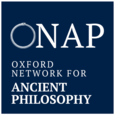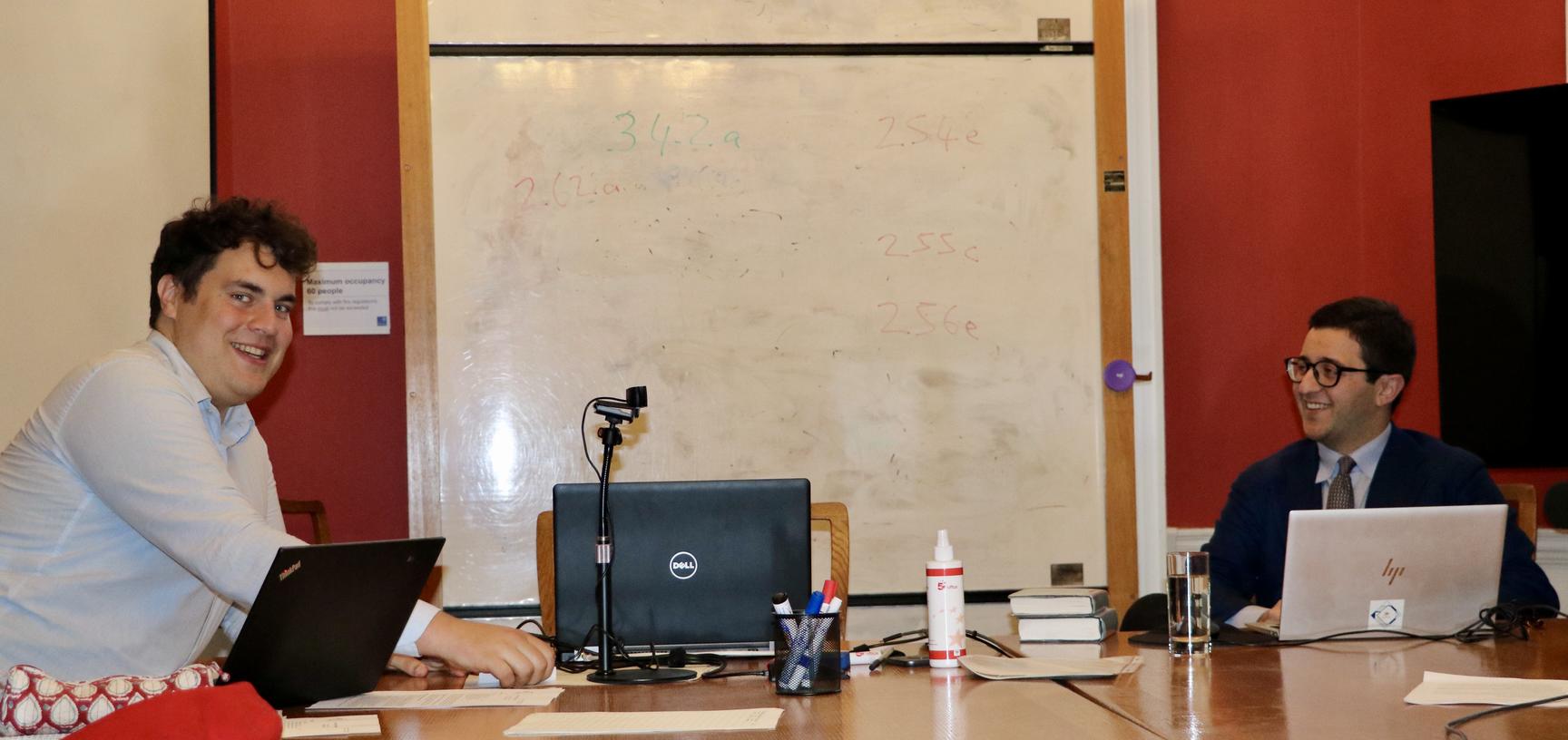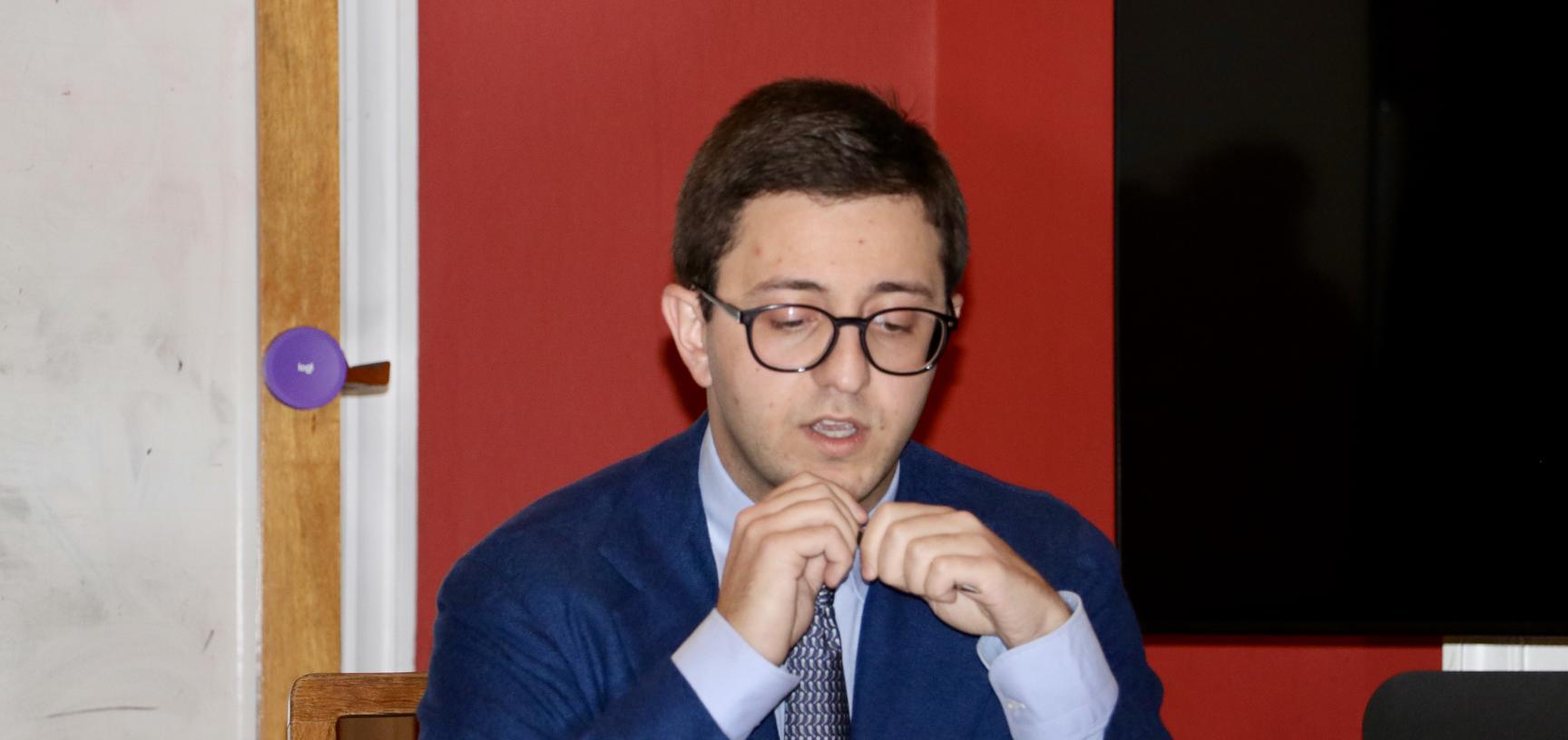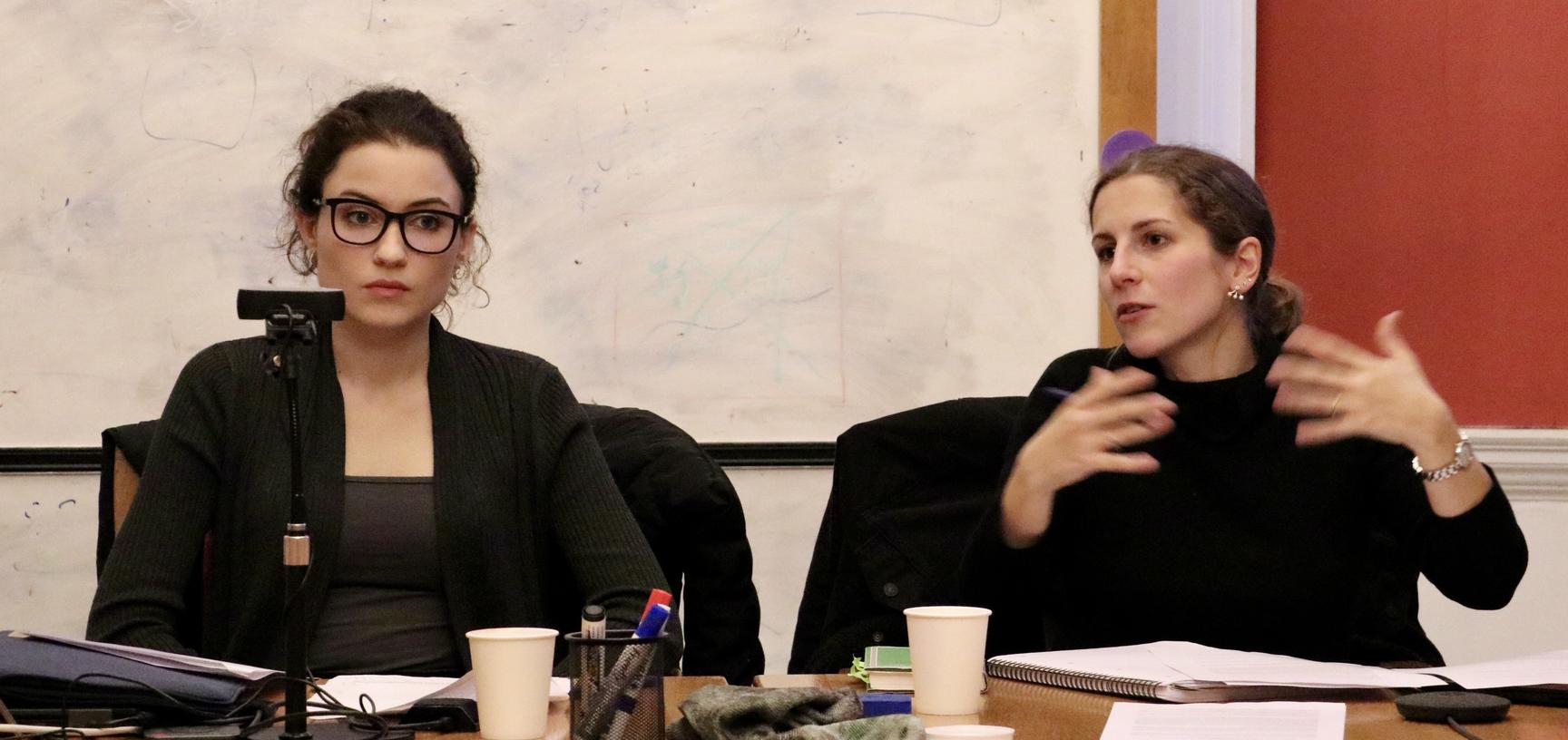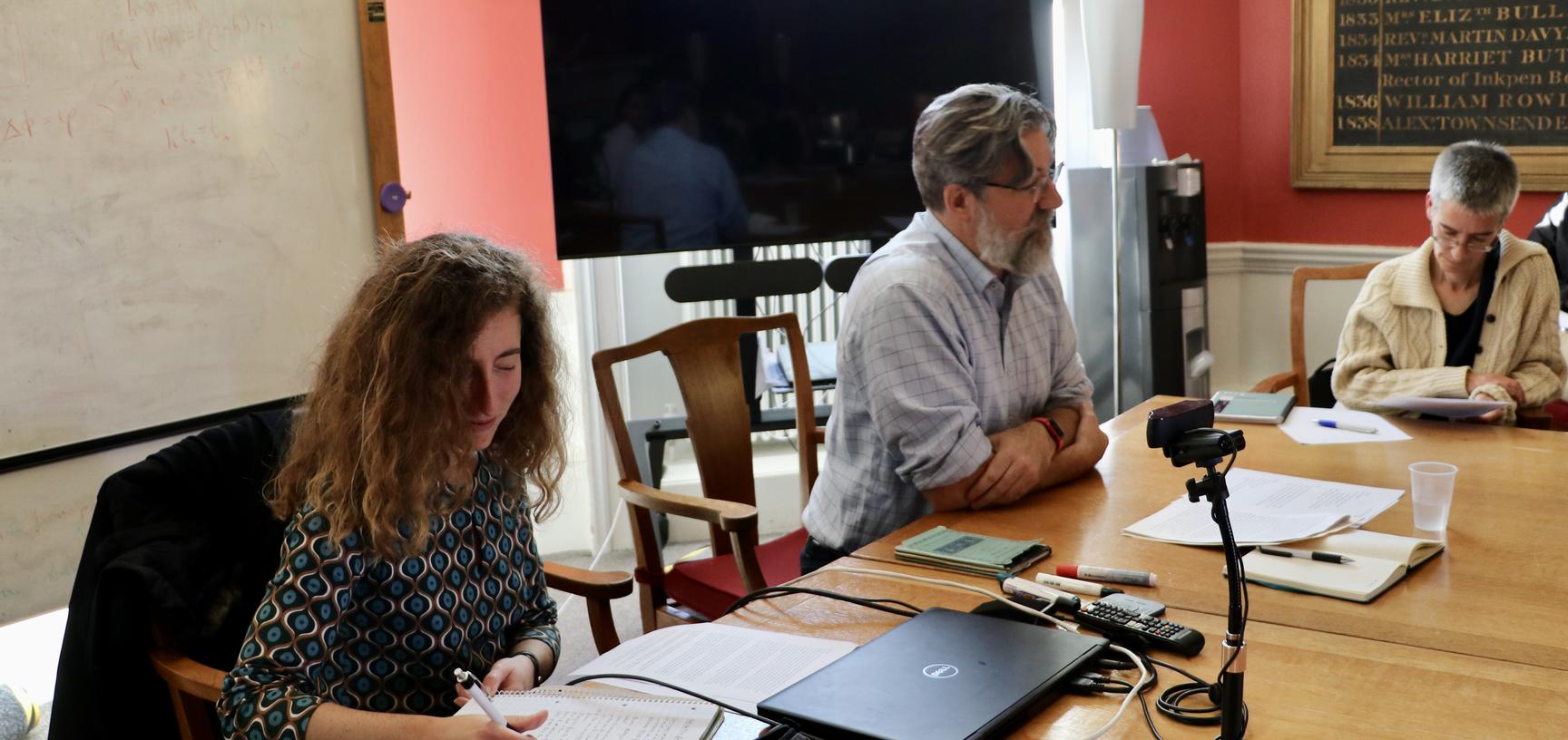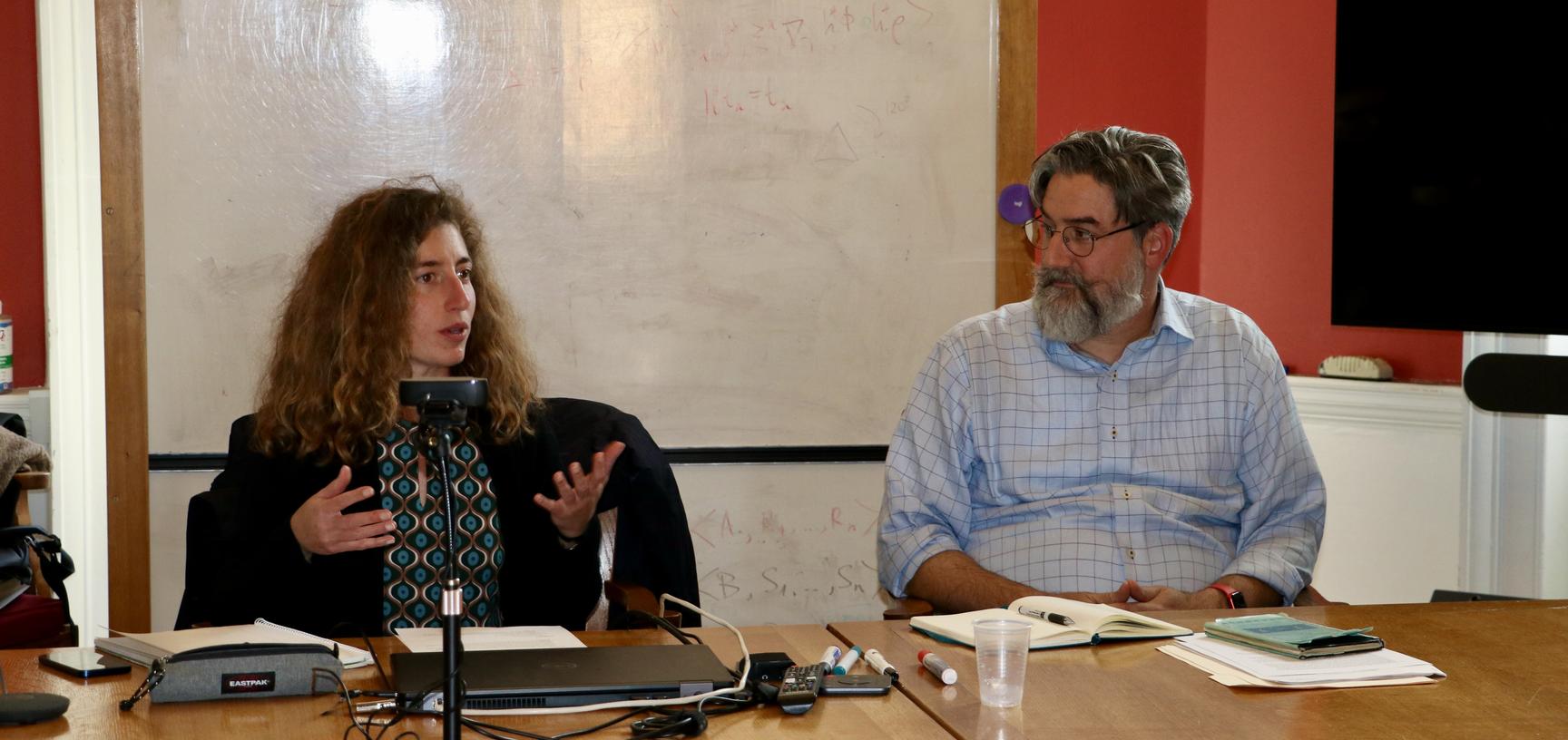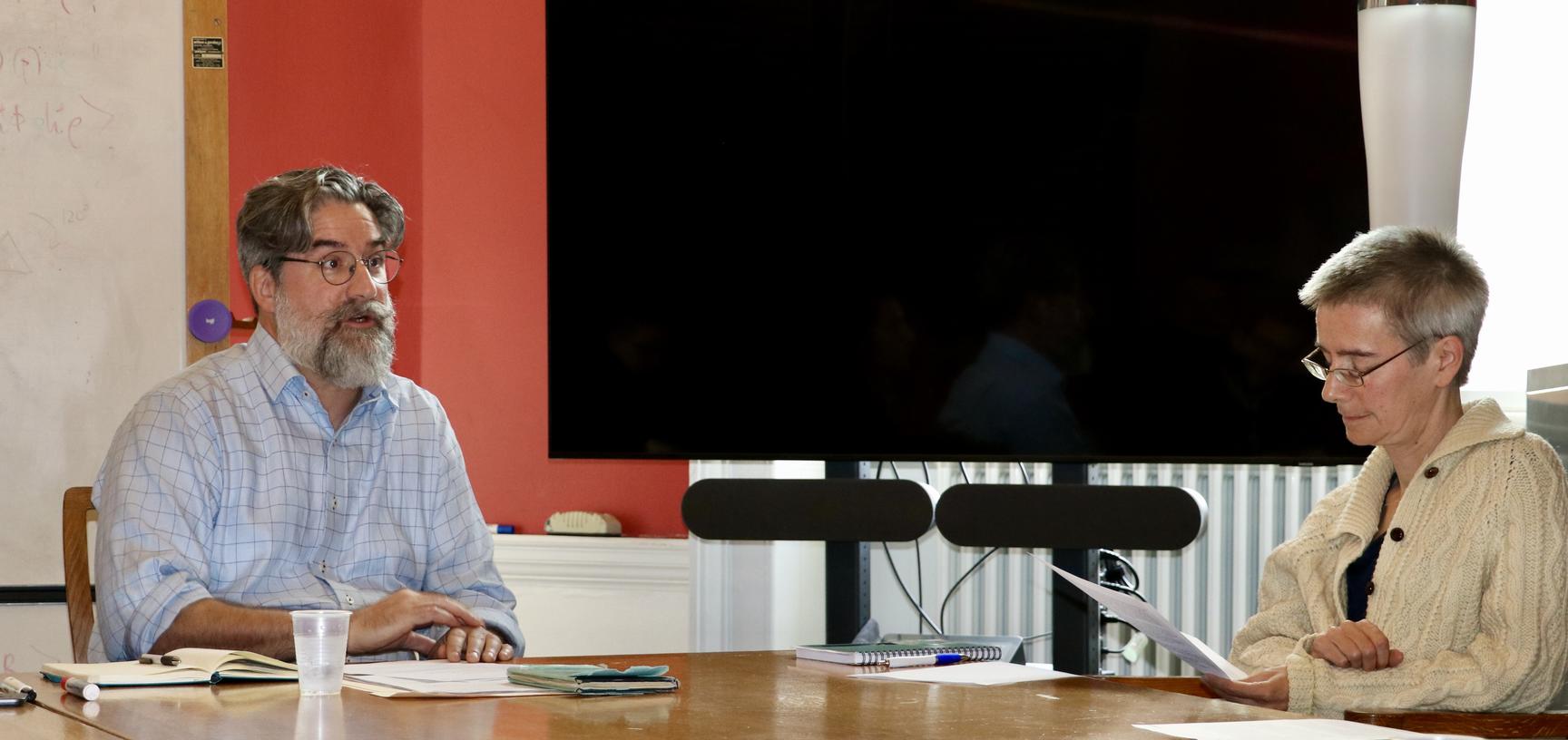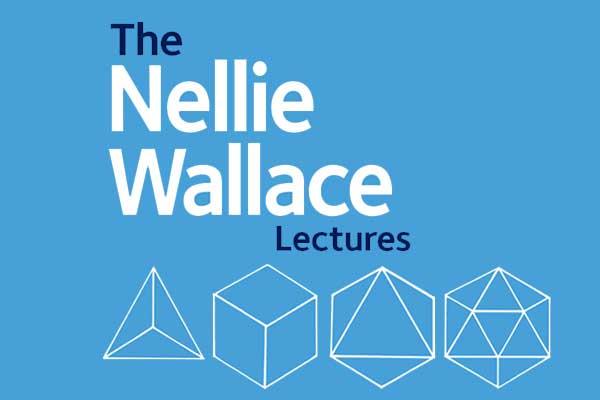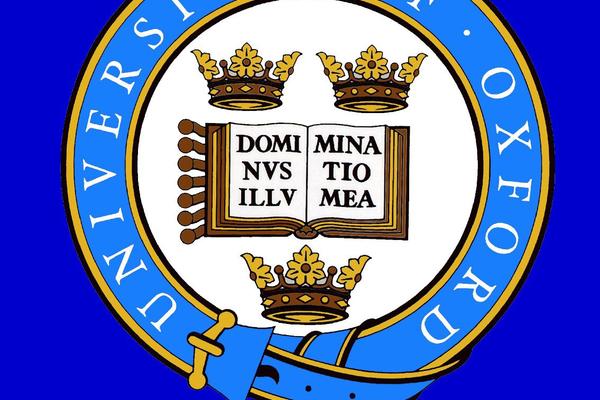Invited Speakers
Workshop in Ancient Philosophy - MT 2025
Chris Izgin (Oxford): 'Themistius on the Grasp of Axioms in the Posterior Analytics'
Abstract: In his Paraphrasis of Aristotle's Posterior Analytics, Themistius claims that the intellect grasps the per se attributes of which axioms are composed. However, he does not give any examples, leaving his account unsubstantiated. I aim to show that Aristotle’s principles of non-contradiction and of excluded middle, which are axioms common to all demonstrative sciences, are derivable from the per se attributes that are part of Aristotle’s definition of contradiction.
Chair: Ursula Coope
Rachel Barney (Toronto): 'Plato on the Normativity of Craft'
Location: Amersi Lecture Theatre, Brasenose College
Chair: Simon Shogry
Kassandra Dugi (Oxford): 'Epictetus on Moral Responsibility and What Is Up To Us'
Abstract: The concept of what is ‘up to us’ (ἐφ᾽ἡμῖν) is central to Epictetus’ philosophy. Earlier Stoics (in particular Chrysippus) seem to have used this term to argue that, even in a deterministic cosmos, we are still morally responsible for our actions, since our assents and impulses are up to us and not anything outside of us. For Epictetus, what is up to us takes on a much more central ethical role, describing only what is (in all cases) free, unimpeded and unconstrained. By understanding what things are up to us (namely our prohairesis and its activities) and limiting our desires and attachment to only those, we can achieve unassailable happiness and avoid ever being frustrated in our desires, since they cannot be externally interfered with.
Based on these central premises, as well as Epictetus’ claim in Diss 4.1.73 that walking is not in our power, since our body can be physically restrained from walking, most commentators assume that, for Epictetus, our actions are not up to us, since they can be externally hindered. However, given the close association of what is up to us and moral responsibility in earlier Stoicism, does this put Epictetus into the position of denying that we are morally responsible for our actions? I seek to answer this question by more closely examining Epictetus’ claims about action, impulse and what is up to as, as well as their relationship to the views of earlier Stoics.
Chair: Alex Bown
Malcolm Keating (Smith College): 'Selves and Sky-flowers: Kumārila Bhaṭṭa on Metaphor and Nonexistents'
Abstract: The seventh-century philosopher Kumārila Bhaṭṭa, in explaining his theory of metaphor, also discusses the problem of negative existentials and nonreferring terms, for cases used by his Buddhist opponents, such as “There is no self” and “The self is a sky-flower.” I show how Kumārila’s broadly descriptivist solution to these puzzles acts as a defense of his preferred theory of metaphor. This case also illustrates the importance of taking Mīmāṃsā texts like the Tantravārttika seriously as philosophical works, even if, given their concern with Vedic hermeneutics, they are less often the topic of modern philosophical interest.
Chair: Monima Chadha
Kelli Rudolph (Kent): 'Beyond Detachment: Political Love in Stoic Cosmopolitan Theory'
Abstract: Critics of Stoic cosmopolitanism claim that it faces a motivational gap, reflecting wider contemporary concerns about cosmopolitan ideals. According to this critique, the Stoic focus on rational detachment and the sufficiency of virtue prevents them from cultivating genuine concern for others. Yet the resources of Stoicism prove more robust than such criticisms allow. While Stoic moral psychology and the doctrine of oikeiosis are often invoked as responses to this challenge, I argue that the Stoics’ notion of political love constitutes a crucial but underexplored aspect of their cosmopolitan vision. This concept provides a distinctive framework for understanding how personal attachments can be extended and universalised, thereby fostering active benevolence and sustaining social responsibility. Far from advocating an abstract or emotionally impoverished ideal, Stoicism articulates principles capable of grounding a model of cosmopolitanism that is both rationally coherent and practically engaged, rooted in recognition of the fundamental interrelations of human life.
Chair: Marion Durand
Francesca Masi (Università Ca’ Foscari, Venezia): 'The Physiology of the epibolē phantastikē tēs dianoias: Epicurus’ Letter to Herodotus 49–51'
Abstract: Diogenes Laërtius states that in the Canon, Epicurus introduced as criteria of truth sensations, prolēpseis, and affections, and the later Epicureans added to these the epibolai phantastikai tēs dianoias (DL X.31). This seems to be confirmed in a passage from Philodemus’ On Signs, which includes epibolai phantastikai tēs dianoias among other criteria (fr. 1 De Lacy).
The notion of epibolē phantastikē tēs dianoias rarely appears in Epicurus’ writings (KD 24; Ep. Hrd. 50–51). More frequently, Epicurus uses the term epibolē, possibly qualified according to the level of generality of its content (the distinction between partial (kata meros) and complete (athroa) epibolai, cf. Ep. Hrd. 35, 36, 69, 83), or the notion of epibolē associated with the genitives tēs dianoias and tōn kritēriōn (51), without reference to the adjective phantastikē. Although Epicurus also uses various expressions relating to epibolē in relevant passages of his work in which he discusses important methodological or physiological aspects of his doctrine, he never explains what it is. Interpreters have approached the subject of epibolē from a predominantly epistemological perspective, seeking precisely to establish:
-
what mental and cognitive act it is and what, if any, its content is;
-
in what relation it is to other cognitive states;
-
why the Epicureans felt the need to introduce the epibolē phantastikē tēs dianoias among the criteria of truth
Finally I will explain the relevance of this physiological interpretation of epibolē phantastikē tēs dianoias on the epistemological level as well. In particular I will show that it makes possible to clearly distinguish epibolē from other processes at the basis of other mental states, such as perception, thought, memory and prolepsis ; to explain why epibolē can occur without perception; to understand in what sense the Later Epicureans understood epibolē as an act of attention and how this should be intended in an atomistic psychological framework; to understand the summarising function it can have on the epistemological level; to clarify why it was elevated to the level of a criterion of truth.
Chair: Michail Peramatzis
Alesia Preite (Ruprecht-Karls-Universität Heidelberg): 'The Secret of Tripartition'
Abstract: The Timaeus is one of the three dialogues where Plato explicitly introduces a tripartite soul. In this dialogue we also appear to learn about the origin, the structure and the composition of the immortal rational soul, but not of the other two parts. In this paper, I challenge this assumption and argue that in an often-overlooked passage (Ti. 42e5-44b8), Timaeus in fact describes the origin of the soul’s mortal parts, from which we can reconstruct their structure and composition. My main claim is that the mortal parts of the soul originate from modifications of the circles of the immortal rational soul and are constituted by them. After discussing the implications of this claim and addressing some possible objections to it, I conclude by briefly showing how this reading of the Timaeus can help us making sense of other complex passages concerning tripartition, such as Glaucus’ one in the Republic (R. 610a9-612a6).
Chair: Simon Shogry
- This is a speaker series devoted to discussing work in progress by speakers within and outside Oxford pertaining to the field
- Seminars take place on Thursdays at 4pm-6pm, in the Schwarzman Centre, Ryle Room (20.339)
- Convenors: Prof. Ursula Coope, Prof. Marion Durand, Prof. Alexander Bown
- Members of the Faculty, students, and visitors are welcome
- If you would like to go out to dinner with the speaker, then please contact the chair of the meeting before Tuesday of that week
Interdisciplinary Research Seminar in the Study of Religions MT 2025: Mysticism & Religious Experience
Time: Tuesday, 28 October, 4:00-5:30pm
Location: Paul Oster Room, LMH
Title: Can We Speak of Buddhist Mysticism?
Speaker: Dr Szilvia Szanyi (Gordon Milburn Junior Research Fellow in the Study of Mysticism and Religious Experience, Campion Hall)
Time: 4:00-5:30pm
Location: Old Library, LMH
Title: Unwelcome Mysticism: A Paradoxical History of Jesuit Spirituality or the Invention of Spiritual Directors
Speaker: Revd Prof. Patrick Goujon, SJ (Senior Research Fellow in Theology and the History of Spirituality, Campion Hall)
Time: 4:00-5:30pm
Location: Old Library, LMH
Title: How Buddhists Stop Thinking and Get Away With It
Speaker: Prof. Rupert Gethin (Emeritus Professor, Department of Religion and Theology, University of Bristol)
Time: 4:00-5:30pm
Location: Old Library, LMH
Title: Catholic and Bhakta: An Irish Journey
Speaker: Shaunaka Rishi Das (Director of the Oxford Centre for Hindu Studies, Hindu Chaplain to Oxford University)

